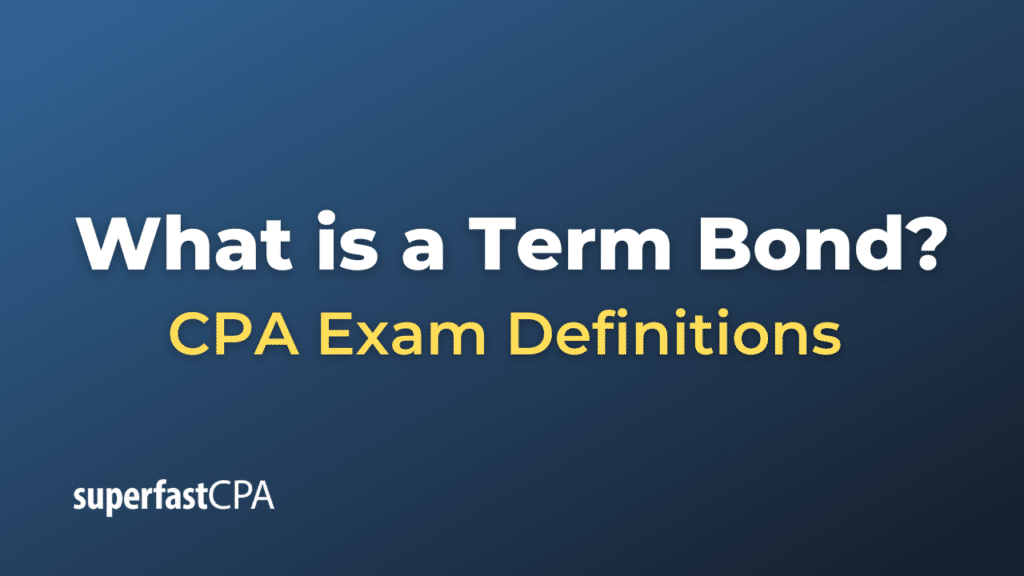Term Bond
A term bond, also known as a bullet bond or bullet maturity bond, is a type of bond that has its principal (face value) amount due and payable at the end of its term. Unlike serial bonds, which have scheduled principal payments spread out over several dates, term bonds have a single maturity date, and the full principal amount is repaid at once on that date.
Here’s a breakdown of the concept:
- Principal Repayment: The entire principal amount of a term bond is due at its maturity. No part of the principal is paid back before this date.
- Interest Payments : Throughout the life of the term bond, periodic interest payments (often semi-annually) are made to the bondholders. These interest payments are based on the bond’s coupon rate.
- Single Maturity Date: All term bonds in an issue mature on the same date.
- Sinking Fund: To ensure that funds are available for the repayment of term bonds at maturity, issuers might establish a sinking fund. This is a pool of money set aside over time to repay the bond’s principal. With a sinking fund in place, the issuer makes periodic contributions to the fund so that the total bond principal is available for repayment at maturity.
Example of a Term Bond
Let’s dive into a more detailed example to understand how a term bond might work in practice.
Example: ABC University Term Bond
Background:
ABC University wants to construct a new library on its campus. The estimated cost of the project is $20 million. To finance this project, the university decides to issue a term bond.
Bond Details:
- Principal (Face Value): $20 million
- Maturity: 15 years
- Coupon Rate : 4% per annum, payable semi-annually
Bond Issuance:
ABC University successfully sells the term bond to various investors. Now, they have the $20 million needed for the library construction.
Interest Payments:
Every 6 months, ABC University will pay interest to the bondholders: Interest payment = ($20 million x 4%) ÷ 2 = $400,000 So, twice a year, ABC University will pay out $400,000 in interest to the bondholders. Over the 15-year period, this totals $12 million in interest payments ($400,000 x 2 x 15).
Principal Repayment:
No part of the principal is repaid until the end of the 15-year term. At that time, ABC University will pay back the entire $20 million in one lump sum to the bondholders.
Sinking Fund (Optional):
To ensure it can make the large principal repayment in 15 years, ABC University might decide to set up a sinking fund. They could, for instance, contribute $1.33 million into this fund every year ($20 million ÷ 15). By the end of the 15-year period, the university would have set aside the full $20 million (without considering any potential interest earned on the sinking fund) to repay the bondholders.
Outcome:
Thanks to the term bond, ABC University can immediately start building its new library. Over the next 15 years, it pays interest to its bondholders and ideally sets money aside in a sinking fund. At the end of the term, the university uses the accumulated sinking fund to pay back the $20 million principal to the bondholders.
This example highlights the basic workings of a term bond from issuance to maturity. The sinking fund is an optional feature that some issuers may use to ensure they have funds readily available at maturity.













